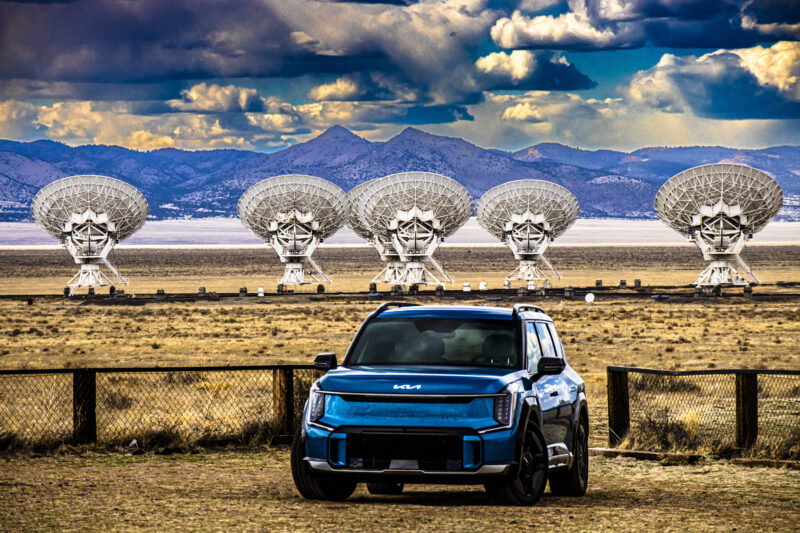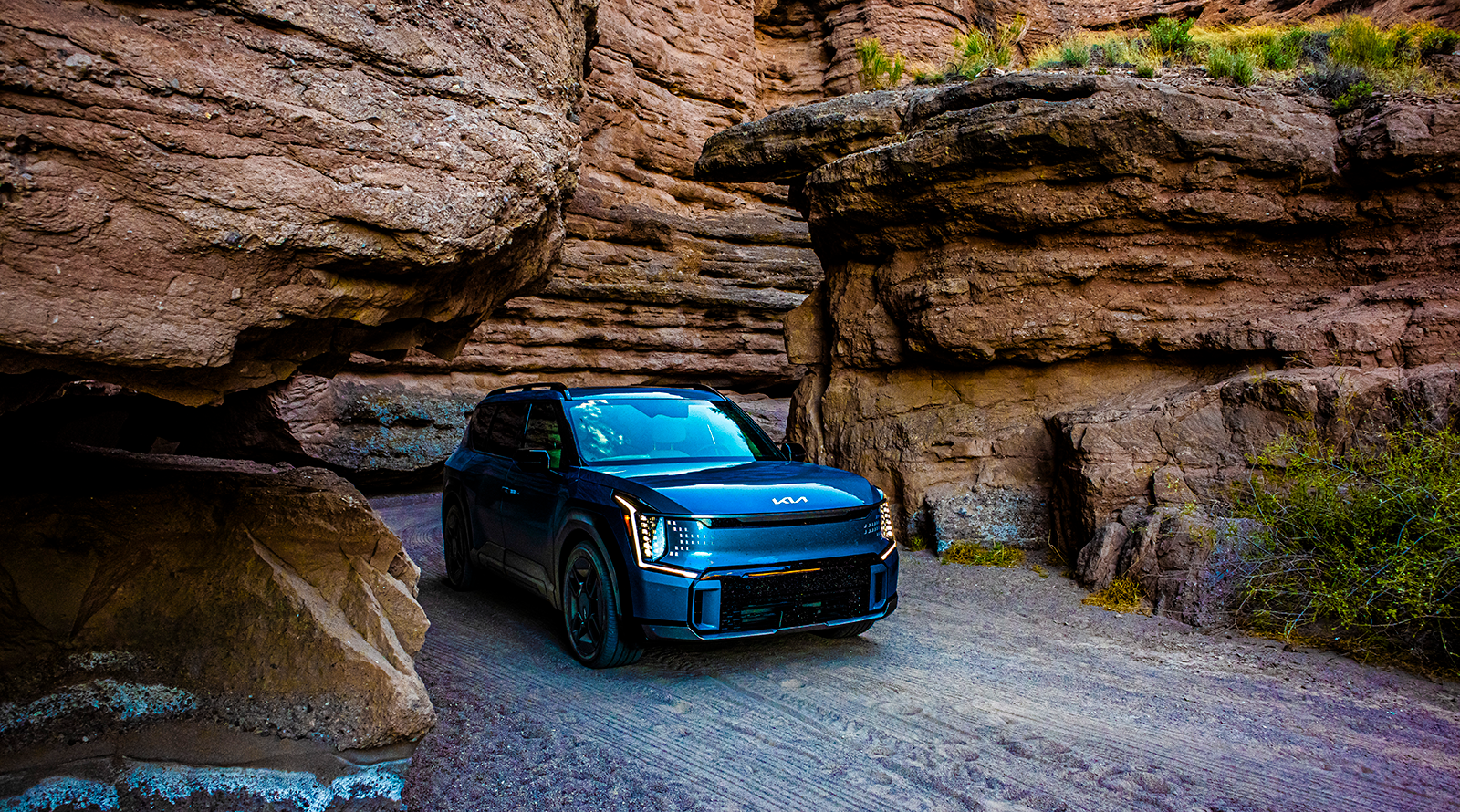How To See Two Highly Underrated Places In NM In Your EV
In another recent article, I wrote about the experience of taking a Kia EV9 out on some backroad adventures in New Mexico. But, I also know that not everyone is interested in a review of a Kia EV. Many of us already have an EV we love, and many people are loyal to their favorite EV brand (especially Tesla fans). So, I wanted to share what I learned on the trip with readers who want to see some beautiful sights in New Mexico in their own EVs!
The two places I’m going to share are the Very Large Array (VLA) and San Lorenzo Canyon. Almost any EV can reach them, as the road to VLA is paved and the road to San Lorenzo Canyon doesn’t require four-wheel drive or high clearance except after major thunderstorms.
Your Charging Basecamp For These Trips: Socorro, New Mexico
To reach either of these places, you’ll likely need to start in Socorro, New Mexico. The town itself doesn’t offer much in the way of tourism, but there are good restaurants, hotels at all price points, and (most importantly for our purposes), EV charging available for all EVs! So, if you can get to Socorro, you can probably day trip out to these places.
When it comes to rapid charging, there are currently two options. First, there’s the Socorro Supercharger. It’s a V3 supercharger, so if your vehicle isn’t a Tesla but you have both the adapter and support for it has opened up (at present only Ford and Rivian have done this), you can use the charger. If you don’t have a compatible vehicle or just don’t want to use a Tesla station for whatever reason, there’s also a ChargePoint station at the city’s plaza.

There’s also a few EV-friendly RV parks you can find on Plugshare, but call ahead first if you plan to charge a car, as not all RV parks allow that, and rules can change at any time. The Best Western also has a Tesla destination charger if you’d rather charge for free overnight, but there’s only one plug and you’d need an adapter to charge there with J-1772 EVs.
The Very Large Array
If you recognize the antennas (“satellite dishes”) in this image and have never been to them, you’ve probably seen them on the big screen. Because they’re so huge and there are so many of them, they make the perfect spot for movies like Contact, Independence Day, and 2010: The Year We Make Contact. Because they’re so big, they must be able to talk to or at least listen to aliens, right?
Sadly, they aren’t used for alien stuff. The main purpose of the array of radio telescopes is to see parts of the sky using radio waves that can penetrate the dust that floats around in space. Because the antennae can be moved along railroad tracks up to 44 miles apart, the facility is very sensitive. But, the facility does let SETI comb through the facility’s data while it’s being used for other things, so the VLA does get used for alien stuff a little even if it’s not the primary or even secondary mission!
From Socorro, the VLA is about a 100-mile round trip, but it’s a steep climb out of the Rio Grande valley to the high desert plains the telescope array sits on. If your EV isn’t charge up to at least 150 miles of range, you’ll probably want to use trip planning software to make sure you can get back to Socorro.
I went during a recent open house day, but if you want to go on other days of the year, it’s still possible to get a tour. The site is open most days from 9 AM to 4 PM, excluding some holidays. Be sure to check out the NRAO’s website for further information.
Along the way, there are a few other things to see, like the small town of Magdalena and The Box Recreation Area.
One of New Mexico’s Hidden Gems: San Lorenzo Canyon
Once you’re back in Socorro, you’re not very far from an amazing little sandstone canyon. Sadly, Google Maps currently does not show the road into the canyon, instead displaying a trail. So, you won’t be able to get driving directions from it or get directions from many in-car navigation systems.
The road out there is pretty decent, though. It’s a dirt road, but it gets regular maintenance and blading. Except for right after major late-summer thunderstorms, the road is passable by all vehicles. High clearance and four-wheel drive are not needed at all as long as you stick to the main road and don’t drive off into an arroyo. There’s even a place called the Round Room where you can drive your car deep into a narrow canyon.
To get there, you’ll want to charge your vehicle up more than the 40 miles of driving you’d be doing, just in case you use more energy going on the dirt roads. I’d recommend leaving Socorro with at least 80-100 miles of displayed range just to be sure you have plenty of extra battery in case anything goes wrong.
You can start by copying and pasting this latitude and longitude (“GPS coordinates”) into your preferred navigation software: 34.22300232448997, -106.92220986838895 . Or, you can drive north on I-25 to the Lemitar exit, go under the highway to the west frontage road, and follow it until you reach the part where it ends and goes back under the highway. There’s a little dirt road that goes west from this point that leads to the canyon.
Two miles away from the frontage road, you’ll turn left and go across a cattleguard. From there, stay on the main dirt road until you find yourself in a big sandstone canyon. Once you’re in the canyon, there’s one side canyon you can drive into — the Round Room. There are also tons of places to camp, climb the sandstone, hike, and more.
Just over a mile into the canyon, the nice dirt road reaches a dead end, but there’s plenty of space to turn around when you get to the end, plus there’s often a small spring you can stop to look at.
San Lorenzo Canyon is best visited in the spring and fall. Late summers are typically a bad time, as storms can put a lot of water into the canyon, making it harder to drive in and dangerous to be in should a flash flood occur. Plus, summers are very hot in the area and winters can still get very cold after dark.
All images by Jennifer Sensiba.
Have a tip for CleanTechnica? Want to advertise? Want to suggest a guest for our CleanTech Talk podcast? Contact us here.
Latest CleanTechnica.TV Video

CleanTechnica uses affiliate links. See our policy here.




